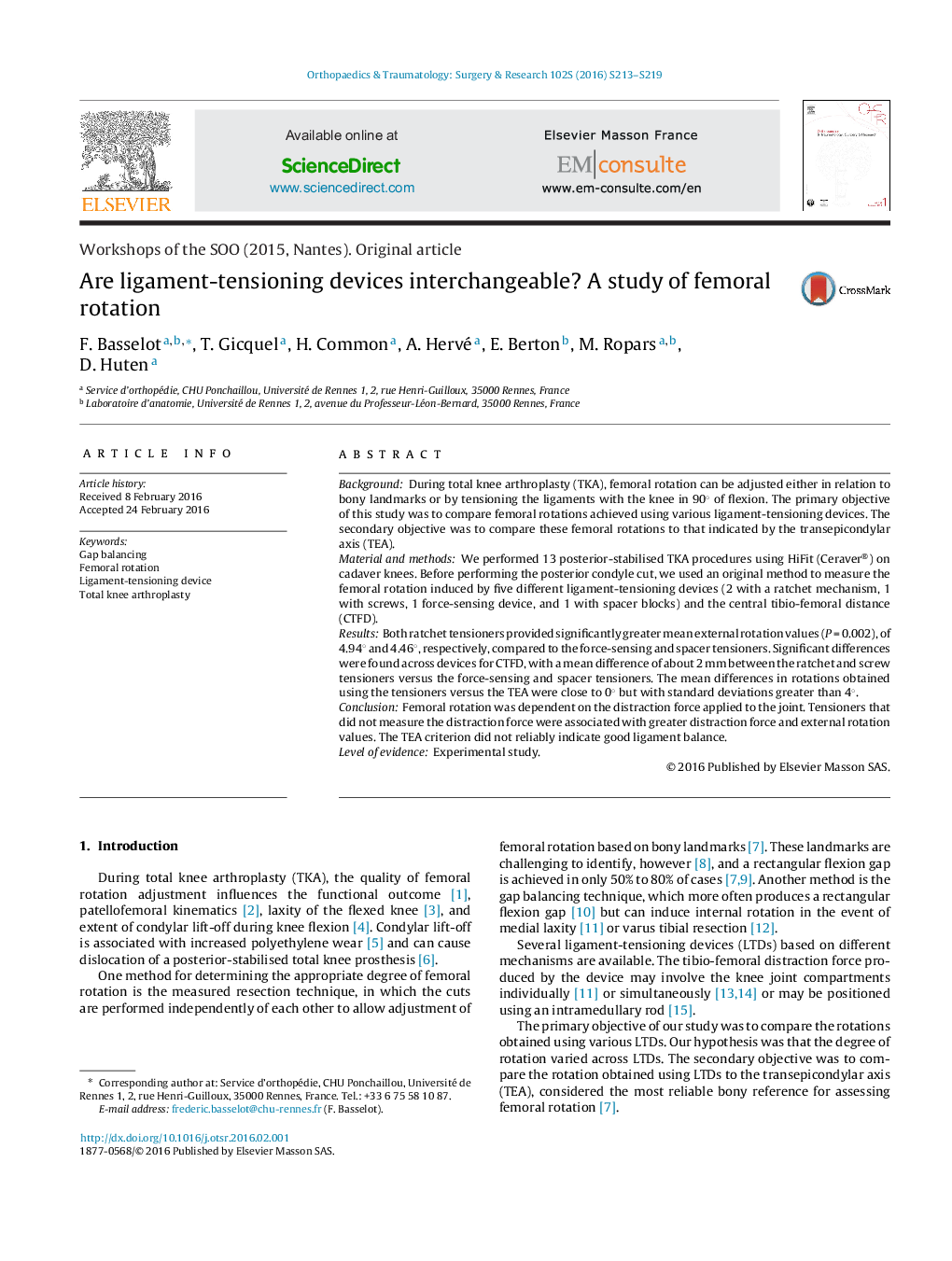| Article ID | Journal | Published Year | Pages | File Type |
|---|---|---|---|---|
| 4080924 | Orthopaedics & Traumatology: Surgery & Research | 2016 | 7 Pages |
BackgroundDuring total knee arthroplasty (TKA), femoral rotation can be adjusted either in relation to bony landmarks or by tensioning the ligaments with the knee in 90° of flexion. The primary objective of this study was to compare femoral rotations achieved using various ligament-tensioning devices. The secondary objective was to compare these femoral rotations to that indicated by the transepicondylar axis (TEA).Material and methodsWe performed 13 posterior-stabilised TKA procedures using HiFit (Ceraver®) on cadaver knees. Before performing the posterior condyle cut, we used an original method to measure the femoral rotation induced by five different ligament-tensioning devices (2 with a ratchet mechanism, 1 with screws, 1 force-sensing device, and 1 with spacer blocks) and the central tibio-femoral distance (CTFD).ResultsBoth ratchet tensioners provided significantly greater mean external rotation values (P = 0.002), of 4.94° and 4.46°, respectively, compared to the force-sensing and spacer tensioners. Significant differences were found across devices for CTFD, with a mean difference of about 2 mm between the ratchet and screw tensioners versus the force-sensing and spacer tensioners. The mean differences in rotations obtained using the tensioners versus the TEA were close to 0° but with standard deviations greater than 4°.ConclusionFemoral rotation was dependent on the distraction force applied to the joint. Tensioners that did not measure the distraction force were associated with greater distraction force and external rotation values. The TEA criterion did not reliably indicate good ligament balance.Level of evidenceExperimental study.
